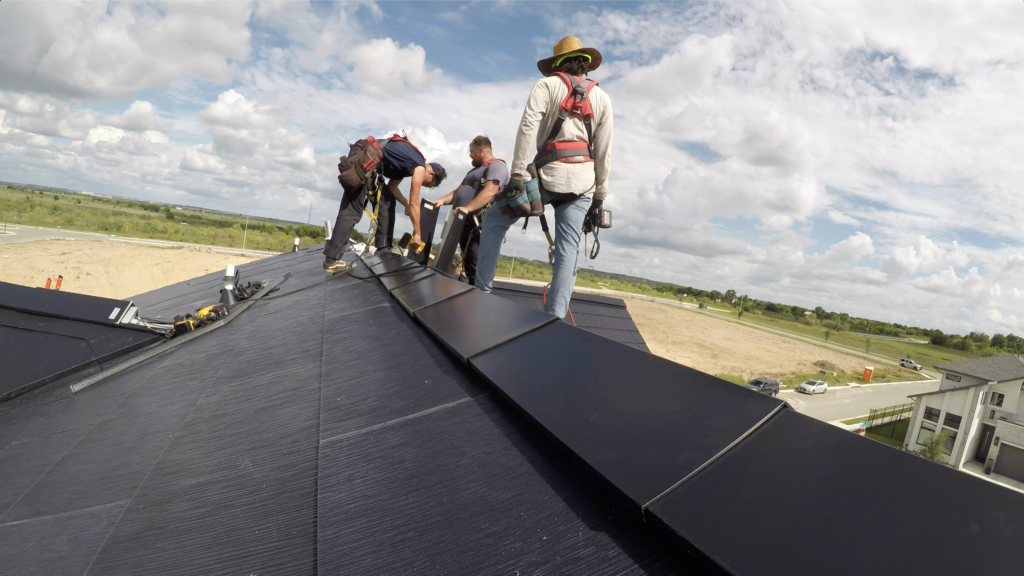
The installation of solar panels on a residential roof at the first Tesla Solar neighborhood, located in East Austin, photo courtesy of Brookfield Residential
Not only is Tesla building a $1.1 billion Gigafactory in Austin to make trucks and other vehicles, but Tesla Energy is also creating a solar-powered local neighborhood.
Last week, Tesla Energy announced the first Tesla Solar neighborhood called SunHouse at Easton Park, 12 miles east of downtown Austin. Tesla is working with Brookfield Asset Management and Dacra.
“Neighborhood solar installations across all housing types will reshape how people live,” Elon Musk, CEO of Tesla, said in a news statement. “The feedback we get from the solar and battery products used in the community will impact how we develop and launch new products.”
Installation of Tesla V3 solar roof tiles and Powerwall 2 battery storage began in June at select homes in the SunHouse community on land in Brookfield Residential’s Easton Park master-planned residential community.
The houses, being built by various homebuilders, start in the low $300,000s and go up from there.
“This initiative brings together multiple parts of our organization with innovative and forward-thinking partners that share a commitment to advance the development of sustainable communities,” Brian Kingston, CEO of Brookfield’s Real Estate business. “As consumers increasingly seek out energy security alongside sustainable places to live, combining Tesla’s solar technology together with Brookfield’s real estate and renewables development capabilities will help us meet demand for environmentally responsible communities of the future.”
“Our goal is to establish that fully sustainable neighborhoods are not only viable, but the best practical and economical choice,” Craig Robins, CEO of Dacra, said in a news release. “Together with Brookfield and Tesla, we are trying to change the world by creating technology-driven, energy-independent communities that make the world a better place.”
The master-planned community of homes seeks to become an energy-neutral, sustainable community and a model for the design and construction of sustainable large-scale housing projects around the world. The community also expects to produce enough energy to supply daily needs and reduce the daily demand on the electric grid. They will also have backup power and they will have the ability to sell excess energy back to the energy grid.
Tesla Solar will provide ongoing oversight of the homes’ energy systems, and Brookfield’s renewable power business will integrate a community-wide solar program to serve broader public use needs and surrounding neighborhoods. Brookfield Residential will also incorporate a suite of technology features, including electric vehicle charging stations in each home and throughout the community.
The City of Austin and Travis County have both announced commitments to sustainable development.
“The City of Austin is excited for the arrival of these affordable options to housing powered by renewable energy,” Mayor Steve Adler said in a news release. “I am excited for the Tesla, Brookfield, and Dacra partnership’s approach to sustainable energy and housing as an example of the out-of-box thinking that continues to make our community a beacon of innovation for the rest of the country and world.”
